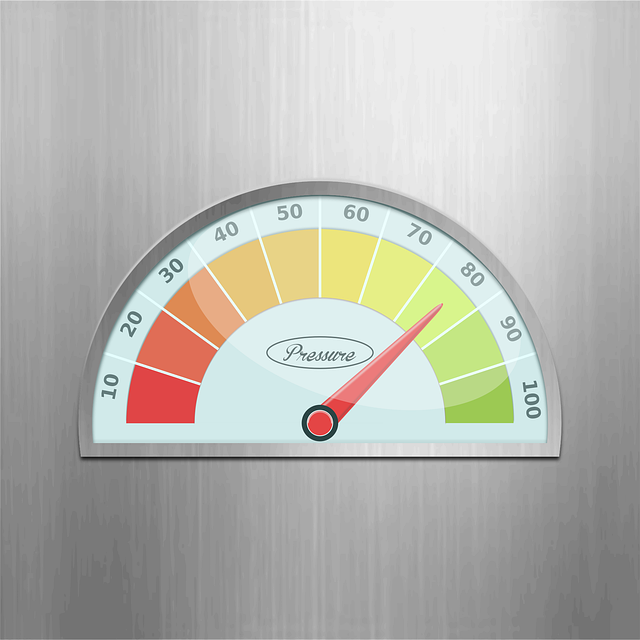What Is a Trading Volume Indicator? An In-Depth Guide to Market Momentum and Analysis
Author: Jameson Richman Expert
Published On: 2025-10-09
Prepared by Jameson Richman and our team of experts with over a decade of experience in cryptocurrency and digital asset analysis. Learn more about us.
Understanding the trading volume indicator is fundamental for serious traders and investors seeking to decode complex market movements with precision. Unlike traditional price charts that merely depict *where* prices are heading, volume indicators reveal *how much* and *how intensely* market participants are engaging at specific price levels. This vital insight enables traders to accurately assess the strength behind price movements, identify potential reversals, confirm trend continuation signals, and avoid false breakouts. This comprehensive guide explores the mechanics, strategic applications, and advanced analysis techniques of volume indicators, empowering traders with the knowledge to enhance profitability, mitigate risks, and adopt a holistic approach to market analysis.

The Evolution and Significance of Trading Volume in Market Analysis
Trading volume analysis has roots tracing back to the earliest financial markets, where the number of shares or contracts traded was a direct reflection of market interest and participation. Historically, high trading volume was indicative of active involvement from institutional traders, signaling strong conviction and increased likelihood of trend sustainability. Conversely, low volume often reflected indecisiveness or lack of commitment among retail traders, suggesting a higher risk of false signals or market noise.
As technological advancements revolutionized trading platforms, volume analysis evolved from basic counting methods to sophisticated indicators integrated into modern trading environments like Binance, MEXC, Bitget, and Bybit. Today, volume is recognized as a crucial confirmation tool within technical analysis frameworks. It helps distinguish genuine market moves from manipulative false signals—such as *price manipulation* or *fake-outs*—which are often engineered to trap unwary traders. For instance, a bullish breakout accompanied by high volume strongly suggests institutional backing and a higher probability of a sustained trend, whereas a breakout on minimal volume may indicate a false breakout, leading to swift reversals. Mastery of volume analysis enables traders to confirm trends, anticipate reversals, and develop resilient strategies rooted in actual market activity rather than relying solely on price action.
Why Trading Volume Matters: Deep Dive into Market Mechanics
The significance of trading volume lies in its role as a *market activity barometer*. It provides critical insights into trader engagement, momentum shifts, and the consensus or disagreement among market participants. For example, during a breakout above resistance, a surge in volume indicates increased institutional interest and suggests that the move is authentic and likely sustainable. Conversely, a breakout with low volume may signal a lack of conviction, increasing the risk of a false signal and subsequent reversal.
Volume analysis also plays a vital role in recognizing divergence patterns—situations where price action and volume trends conflict. For instance, if prices reach new highs but volume diminishes, it indicates waning buying interest, often a precursor to exhaustion and reversal. Similarly, rising volume during a downward move confirms strong selling pressure. These divergence patterns provide early warning signals that enable traders to shift from reactive to proactive, anticipation-based strategies. Essentially, volume acts as a *confirmation candle*, validating or invalidating price signals and refining decision-making processes.
How to Read and Interpret a Trading Volume Indicator
To leverage volume indicators effectively, traders must understand their core components and recognize critical patterns that reveal underlying market conditions. Here's an in-depth breakdown:
- Volume Spikes: Sudden surges in volume often occur at key support or resistance levels, during breakouts, or trend reversals. These spikes signify heightened trader interest and serve as confirmation signals—especially when paired with corresponding price movements. For example, a breakout accompanied by a volume spike suggests strong institutional participation, increasing the likelihood of a sustained move.
- Average Volume: Comparing current volume with its historical average provides contextual insight—whether current activity is above or below typical levels. Consistently high volume during an uptrend indicates robust buying interest and trend strength, while declining volume may suggest waning momentum and a potential reversal.
- Divergences: Divergences occur when price and volume trends conflict. For example, if prices reach new highs but volume declines, it signals market exhaustion and a possible reversal. Conversely, increasing volume during a downtrend confirms strong selling pressure. Recognizing these divergences allows traders to anticipate reversals before they fully materialize, adding an edge to their analysis.
Spotting Volume Spikes and Their Role in Confirming Trends
Volume spikes are critical in validating price movements. They often occur at pivotal moments—such as breakouts or reversals—and serve as strong confirmation signals. In my early trading days, I frequently encountered false breakouts lacking volume support, leading to losses. Over time, I learned to prioritize volume confirmation. For instance, a breakout with a significant volume increase is more likely to be genuine, providing higher success probabilities and reducing the risk of trap trades. Combining volume spikes with other technical signals enhances overall trade confidence and reduces susceptibility to manipulative moves.
Using Average Volume as a Benchmark for Market Momentum
Monitoring current volume against its historical average allows traders to gauge overall market strength comprehensively. An increasing volume trend during an uptrend indicates growing buying interest, reinforcing the trend’s validity. Conversely, decreasing volume signals weakening momentum, often preceding reversals. When combined with other indicators such as Moving Averages, RSI, or MACD, traders can refine their entry and exit points with greater accuracy. This multi-layered approach helps filter out noise and focus on high-probability setups.

Popular Types of Trading Volume Indicators
Various technical tools analyze volume data, each offering unique insights and signals for traders:
- On-Balance Volume (OBV): Calculates a cumulative volume total based on whether the closing price is higher or lower than the previous close. OBV helps identify divergences between volume and price, serving as an early warning system for potential reversals or trend continuation.
- Chaikin Money Flow (CMF): Combines price and volume data to measure the flow of money into or out of an asset. It signals buying or selling pressure, especially useful in trending markets for timing entries and exits.
- Volume Weighted Average Price (VWAP): Represents the average price weighted by volume over a specific period. Widely used by institutional traders, VWAP helps identify support and resistance levels and gauges overall market sentiment throughout trading sessions.
- Money Flow Index (MFI): Merges volume and price data to identify overbought or oversold conditions, aiding in timing entries/exits and confirming trend exhaustion or strength. Divergences between MFI and price can signal impending reversals.
In my extensive trading experience, OBV has proven particularly effective in detecting early divergence signals that precede major reversals. When used alongside other volume-based indicators, traders can develop a robust analytical toolkit for more accurate market predictions and strategic positioning.
Practical Strategies for Applying Trading Volume Indicators
Implementing volume indicators requires discipline, patience, and strategic integration with other technical tools. Here are proven strategies based on real-world trading experience:
- Always seek volume confirmation before acting on price patterns or breakouts. This reduces false signals and traps that can erode capital.
- Pay close attention to divergence patterns—discrepancies between volume and price—as they often herald reversals or exhaustion points.
- Combine volume insights with trendlines, RSI, MACD, Fibonacci levels, and other indicators to enhance signal reliability and refine your timing for entries and exits.
- Set real-time alerts for unusual volume spikes or significant divergence signals, enabling quick reactions to potential breakouts or reversals.
Where and How to Practice Trading Volume Indicators Effectively
Practical mastery of volume analysis comes through consistent practice on trading platforms like Binance, MEXC, Bitget, and Bybit. These platforms provide real-time data, demo accounts, and advanced analytical tools to simulate live scenarios. Testing volume-based strategies in a risk-free environment allows you to refine your interpretation skills, recognize patterns, and develop confidence. Exploring referral programs—such as Binance, MEXC, Bitget, and Bybit) grants access to demo environments and educational resources. Regular practice accelerates your ability to interpret real-time volume signals, recognize pattern formations, and implement timely entries and exits—crucial in volatile markets.

Final Thoughts: Mastering Volume for Strategic Trading Success
Mastering trading volume indicators transforms your approach from reactive to strategic. Over years of experience, I’ve learned that volume is not just a confirmatory tool but a comprehensive gauge of market sentiment, strength, and potential turning points. It reveals hidden depths of price action, signals early reversals, and enhances precision when entering or exiting trades. When integrated with other technical tools, volume analysis creates a multi-dimensional framework that significantly boosts the probability of consistent trading success.
Dedicate time to studying volume patterns, practicing on demo accounts, and continuously refining your interpretation skills. With patience, discipline, and ongoing learning, leveraging trading volume can elevate your trading performance, help you avoid common pitfalls, and unlock deeper insights into market behavior—ultimately increasing profitability and fostering a disciplined, analytical trading mindset.